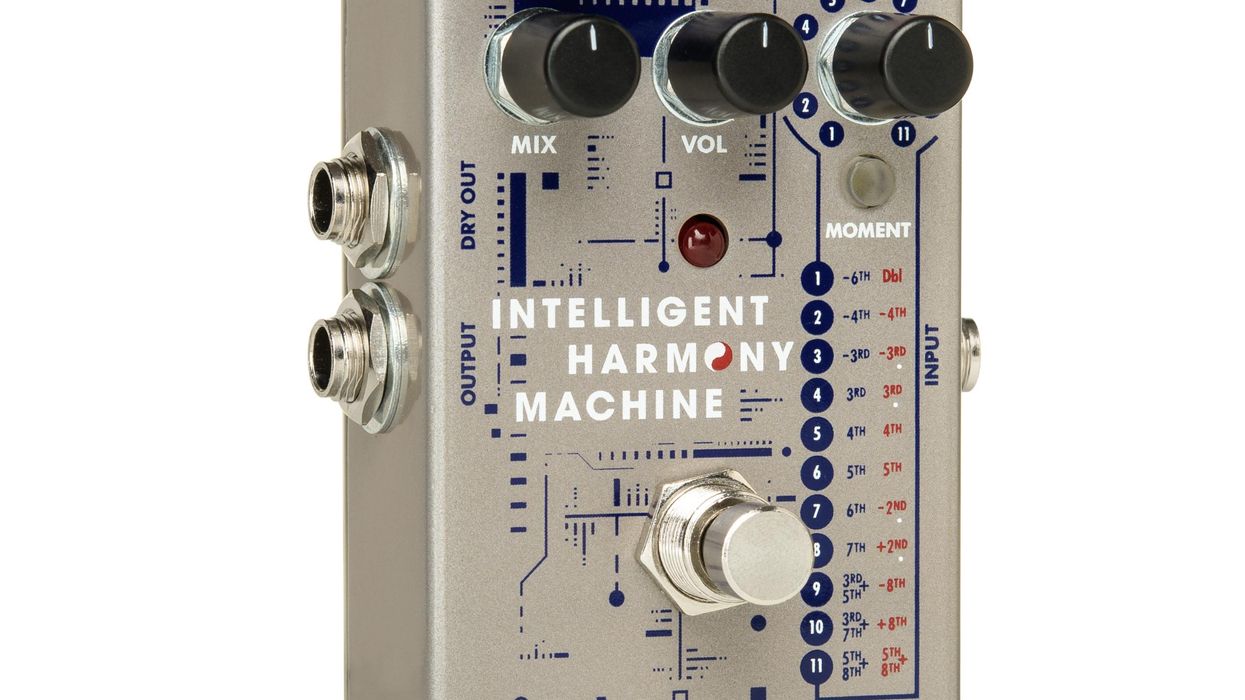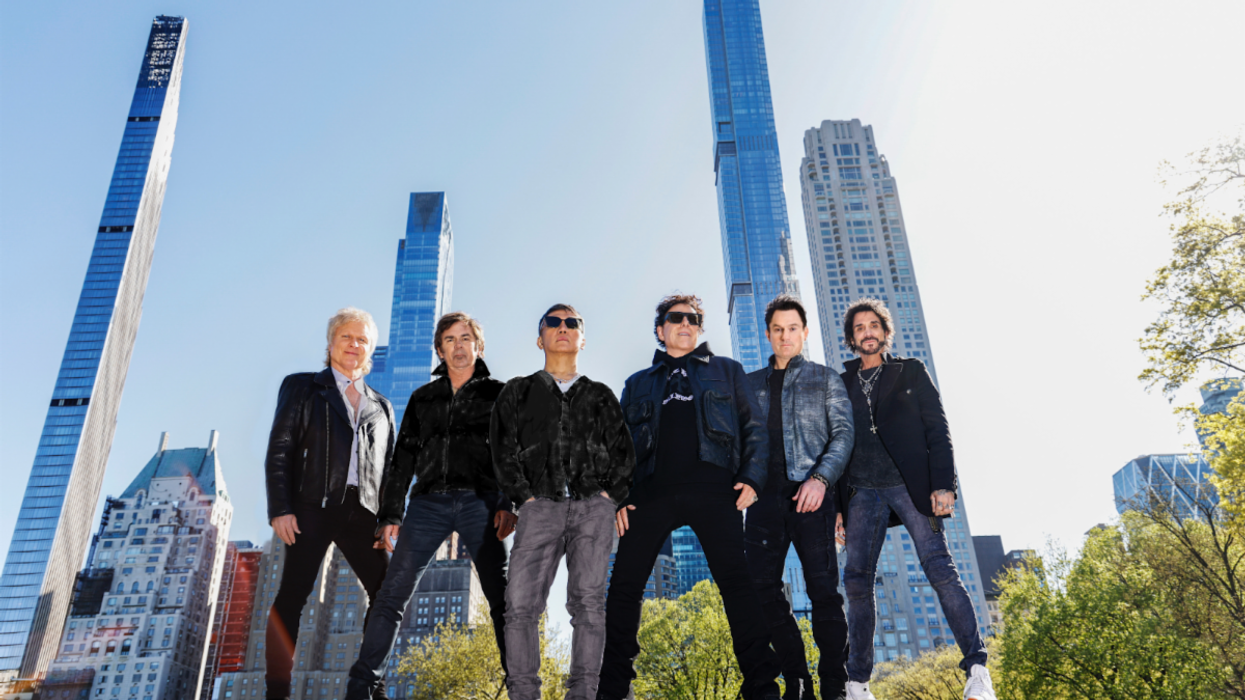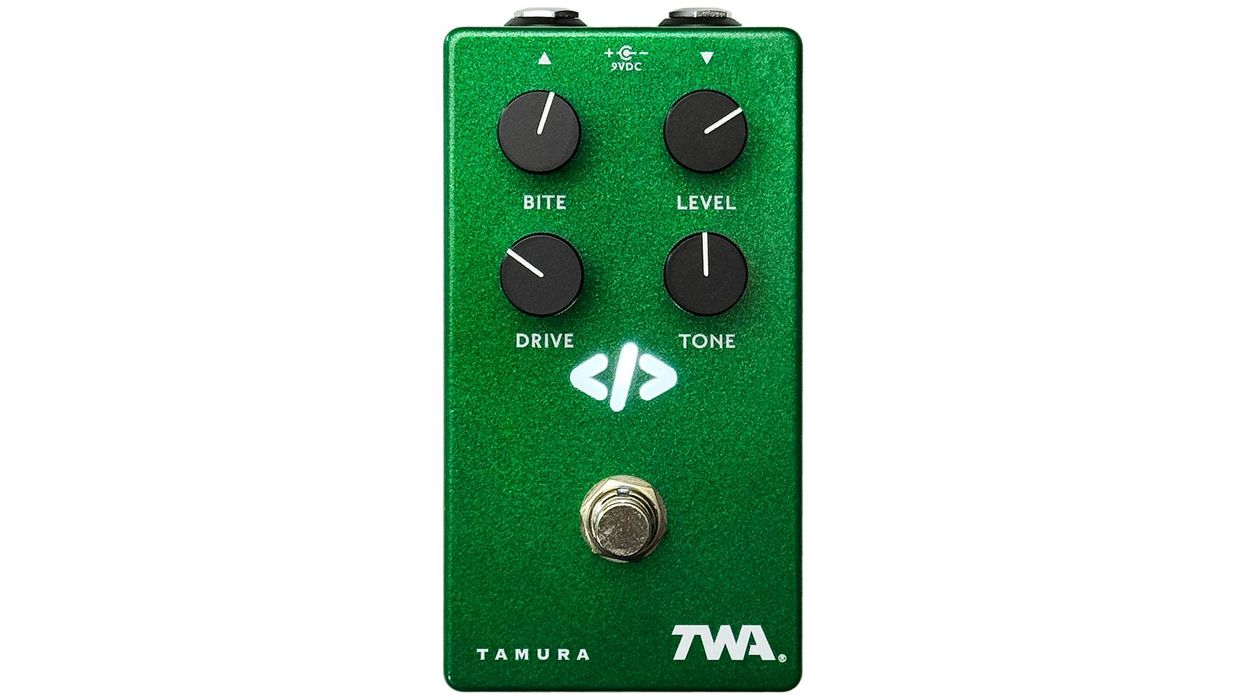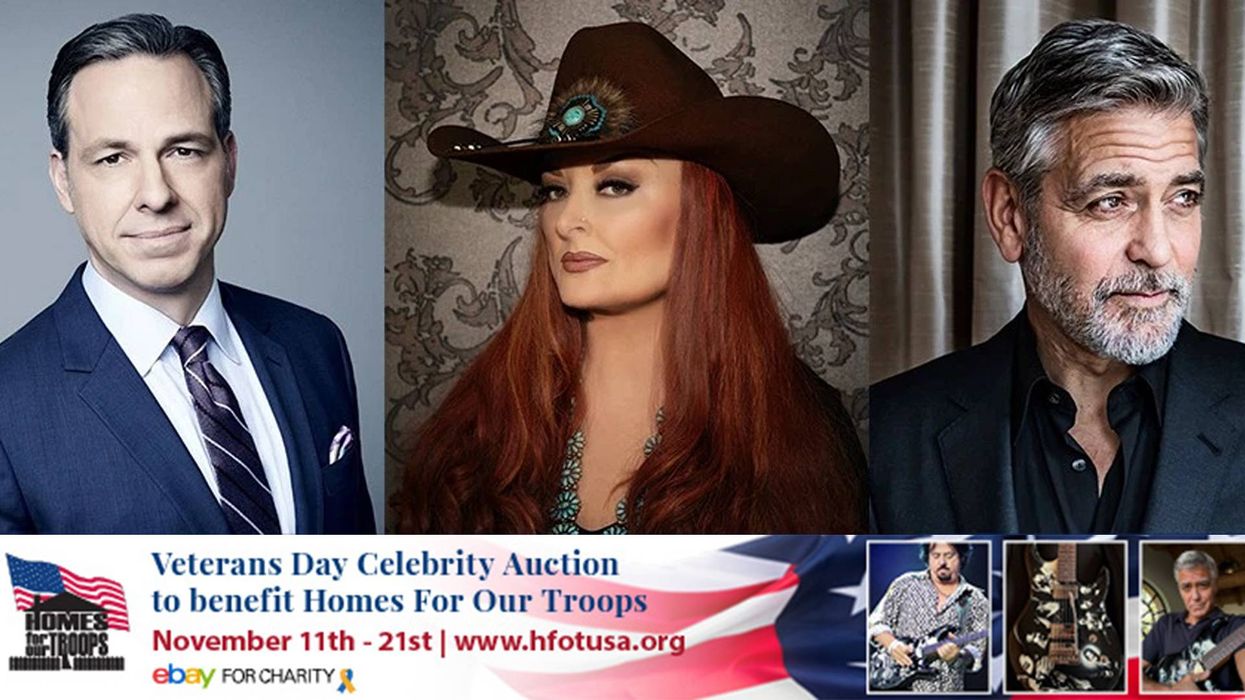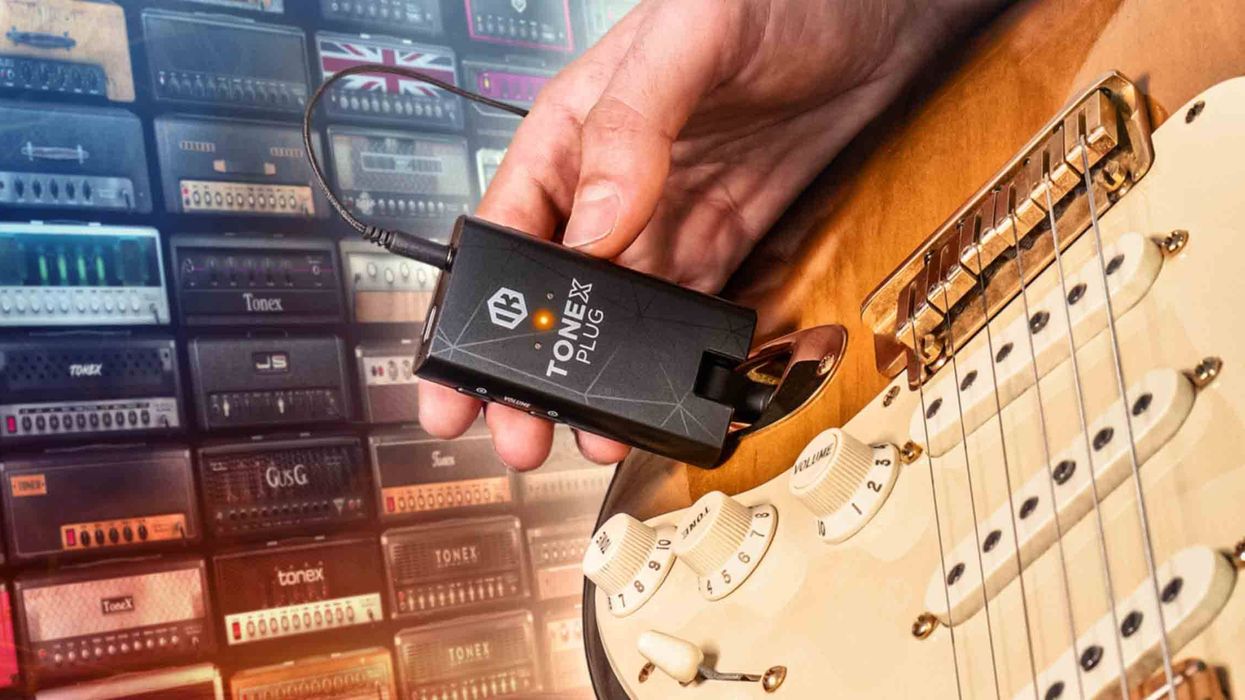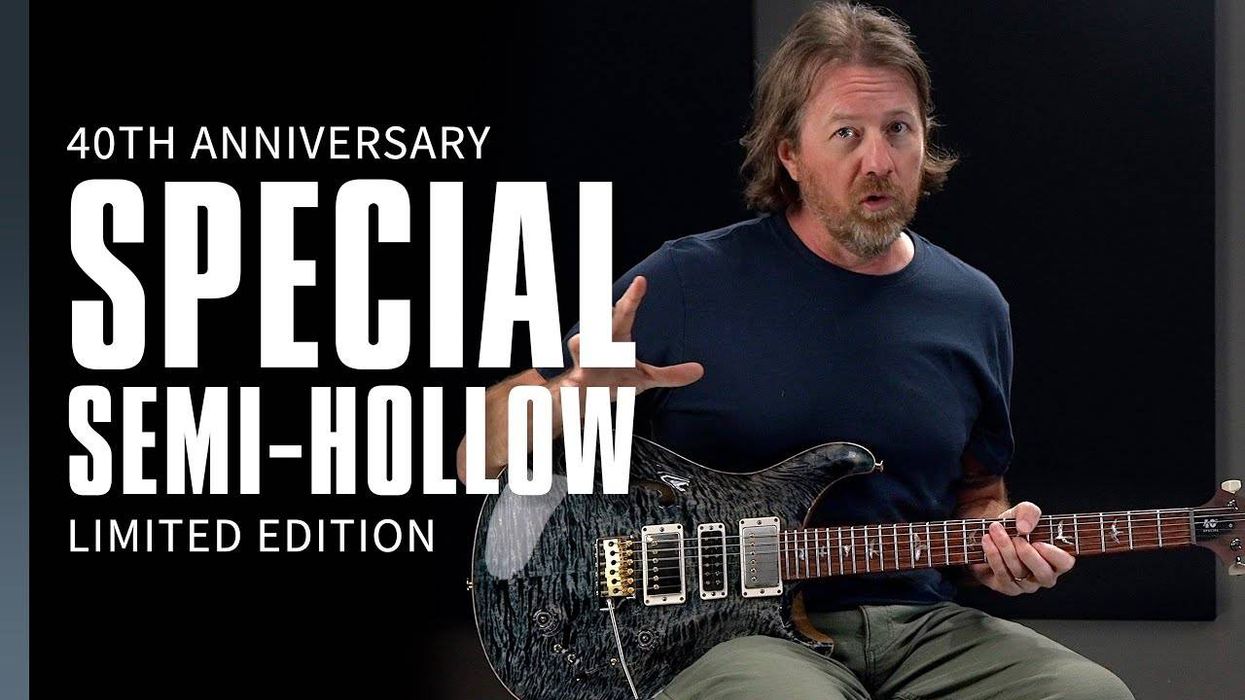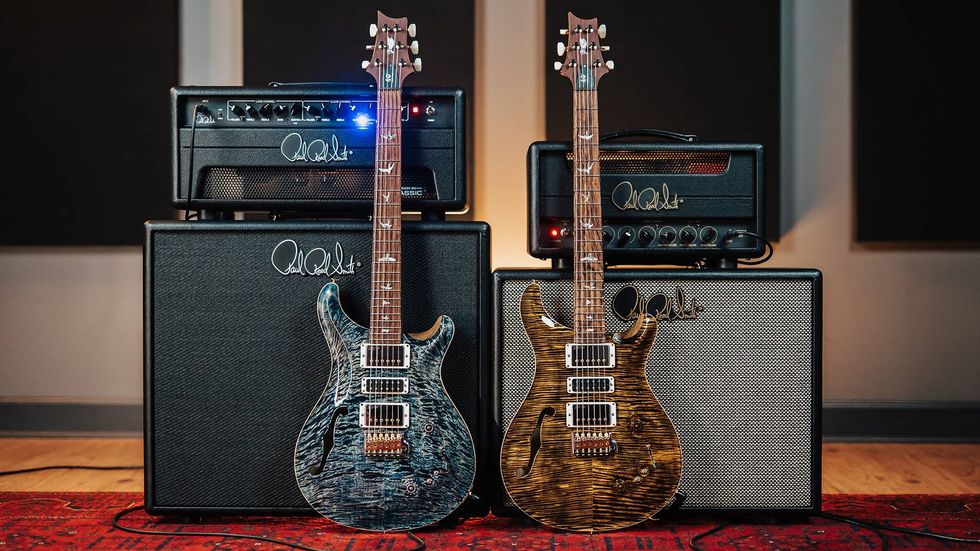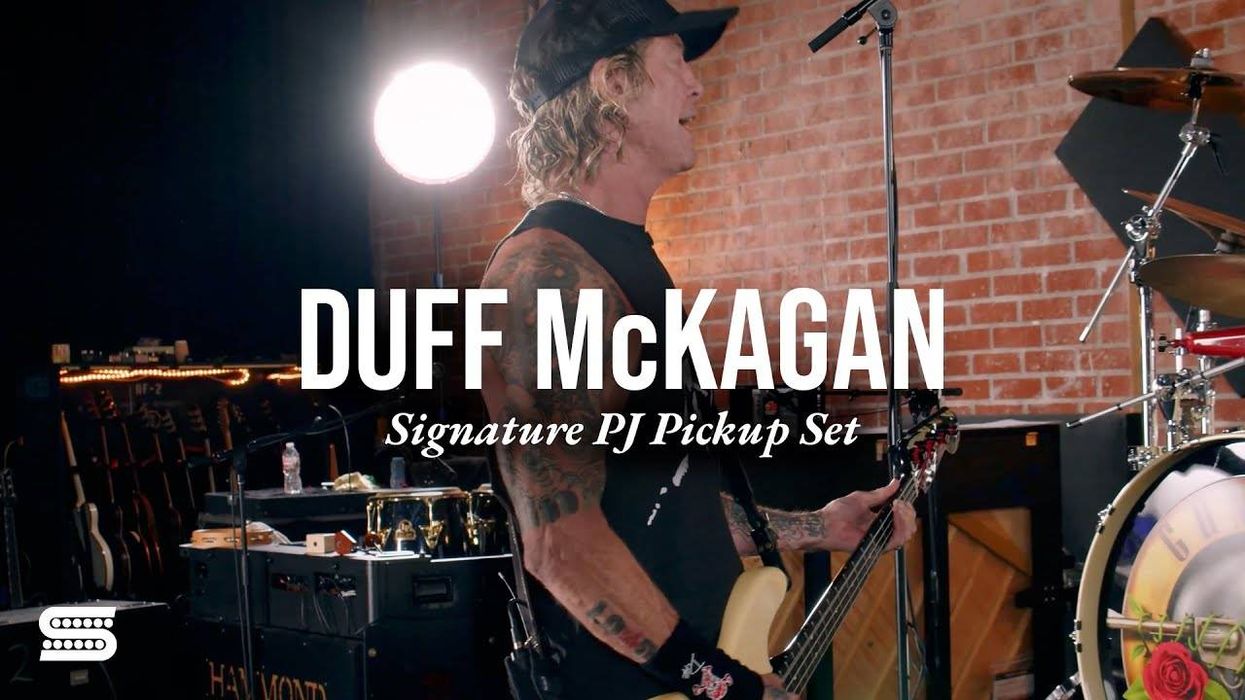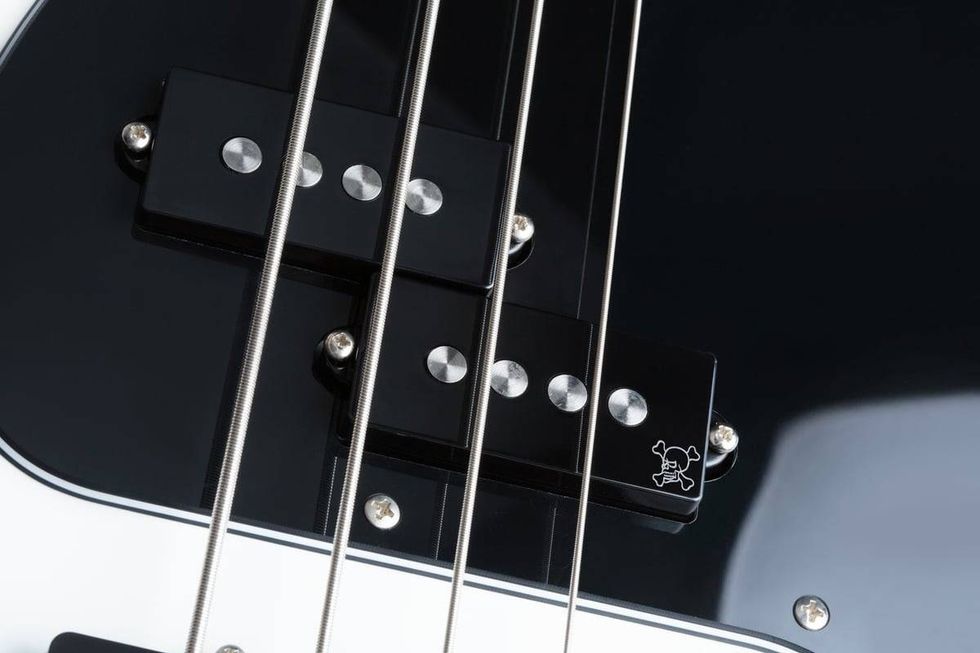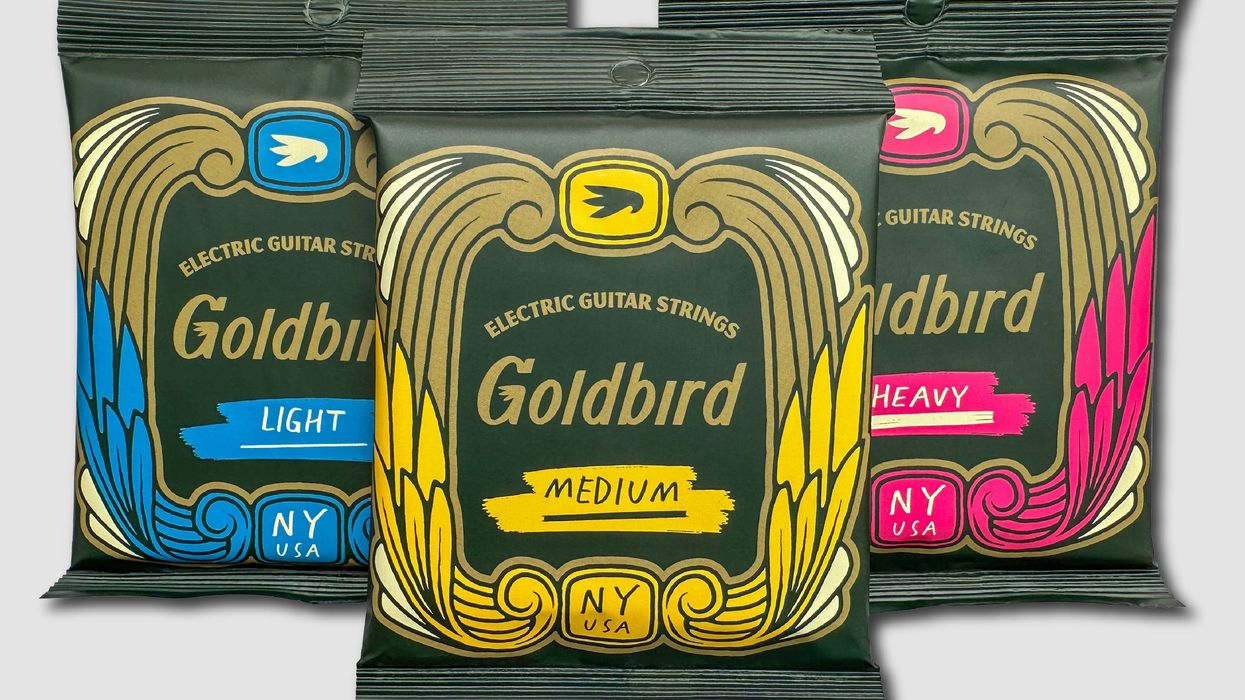Electro-Harmonix has added the feature-rich Intelligent Harmony Machine to its popular line of pitch shifters known for their flawless tracking and musical tone that includes the Pitch Fork+ and POG2.
The Intelligent Harmony Machine can generate single note, diatonic harmonies in a user-assigned key with an extensive choice of intervals as well as secondary options in its two-voice modes.
1 | 6th Down |
2 | Perfect 4th Down |
3 | 3rd Down |
4 | 3rd Up |
5 | Perfect 4th Up |
6 | Perfect 5th Up |
7 | 6th Up |
8 | 7th Up |
9 | 3rd Up + 5th Up |
10 | 3rd Up + 7th Up |
11 | Perfect 5th Up + Octave Up |
It also performs polyphonic pitch shifts and includes a Major/Minor switch so the player can choose whether 2nds and 3rds will be major or minor. Interval selections below:
1 | Doubler |
2 | Perfect 4th Down |
3 | 3rd Down (minor or major) |
4 | 3rd Up (minor or major) |
5 | Perfect 4th Up |
6 | Perfect 5th Up |
7 | 2nd Down (minor or major) |
8 | 2nd Up (minor or major) |
9 | Octave Down |
10 | Octave Up |
11 | Perfect 5th Up + Octave Up |
Electro-Harmonix Intelligent Harmony Machine
The Intelligent Harmony Machine's Moment Mode lets the player instantly change pitch by pressing the pedal's footswitch. The effect is engaged as long as the footswitch is depressed. There's also an option that allows the player to add a user-set sweep time between the dry and synthesized pitches.
EHX Founder, Mike Matthews said: "We designed the new Intelligent Harmony Machine for the player who craves maximum power, but in a minimal footprint. You'll dig its sweet, musical tone and spotless tracking!"
The Intelligent Harmony Machine comes equipped with an EHX 9 Volt power supply, features a U.S List Price of $230.00 and is available now.
For more information:
Electro-Harmonix
